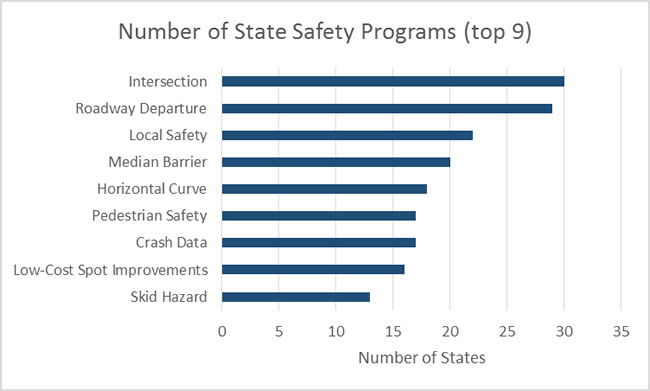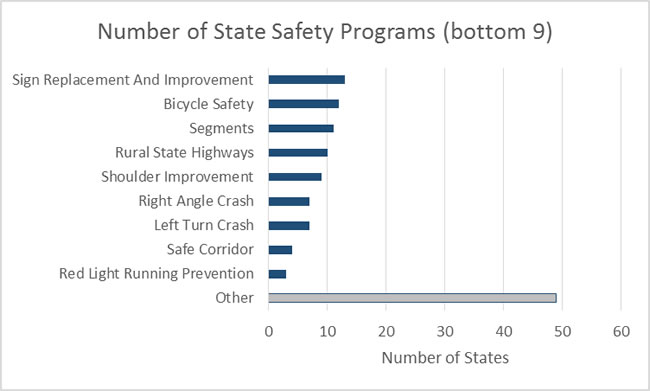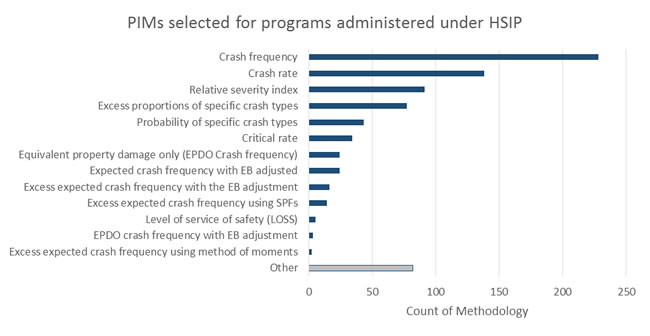Beginning in 2016, the HSIP National Summary Report includes an evaluation of how states are using data-driven safety decision making to support their HSIP. This includes the States safety program administered under the HSIP and the methodologies states use to identify projects in each of these programs, as well as the amount of funds used for systemic improvements. On average, States obligated 38 percent of HSIP funds to address systemic improvements. The following sections and figures present information on State's safety programs and problem identification methodologies.
State Safety Programs Administered Under HSIP
States provide a brief overview of each program administered under the HSIP as part of their annual HSIP report. The HSIP Manual[3] defines a program as a group of projects (not necessarily similar in type or location) implemented to achieve a common highway safety goal. For example, some States have one program that includes all projects resulting from the HSIP planning component. Other States have multiple "sub" programs. An example of a "sub" program may be a skid treatment program designed to reduce wet-weather-related crashes at different locations. Some States also refer to "sub" programs as initiatives.
Figure 2 and Figure 3 present the number of State safety programs for the 2016 reporting period. Most states have "Intersection" (30 States) and "Roadway Departure" (29 States) programs. Twenty-nine states selected 49 programs in the "Other" category. Examples of programs in the "Other" category are: "pavement marking improvements", "longitudinal rumble strips", and "vulnerable road users".

Figure 2: Number of State Safety Programs (top 9)

Figure 3: Number of State Safety Programs (bottom 9)
Methodology Types for Selected Programs Administered Under HSIP
For each State safety program administered under the HSIP, a State can also indicate what project identification methodology (PIM) was used for each program, consistent with the 13 PIMs or performance measures defined in the Highway Safety Manual[4]. Figure 4 presents the number of times a particular PIM was selected by the States. Please note that a State can select more than one PIM for each safety program. "Crash frequency" was selected 228 times while "Excess expected crash frequency using methods of moments" was only selected 2 times. Examples of methodologies in the "Other" category are: "Collaboration with county engineers" and "Hierarchical Bayesian Model".

Figure 4: Count of PIM selected for programs administered under HSIP
